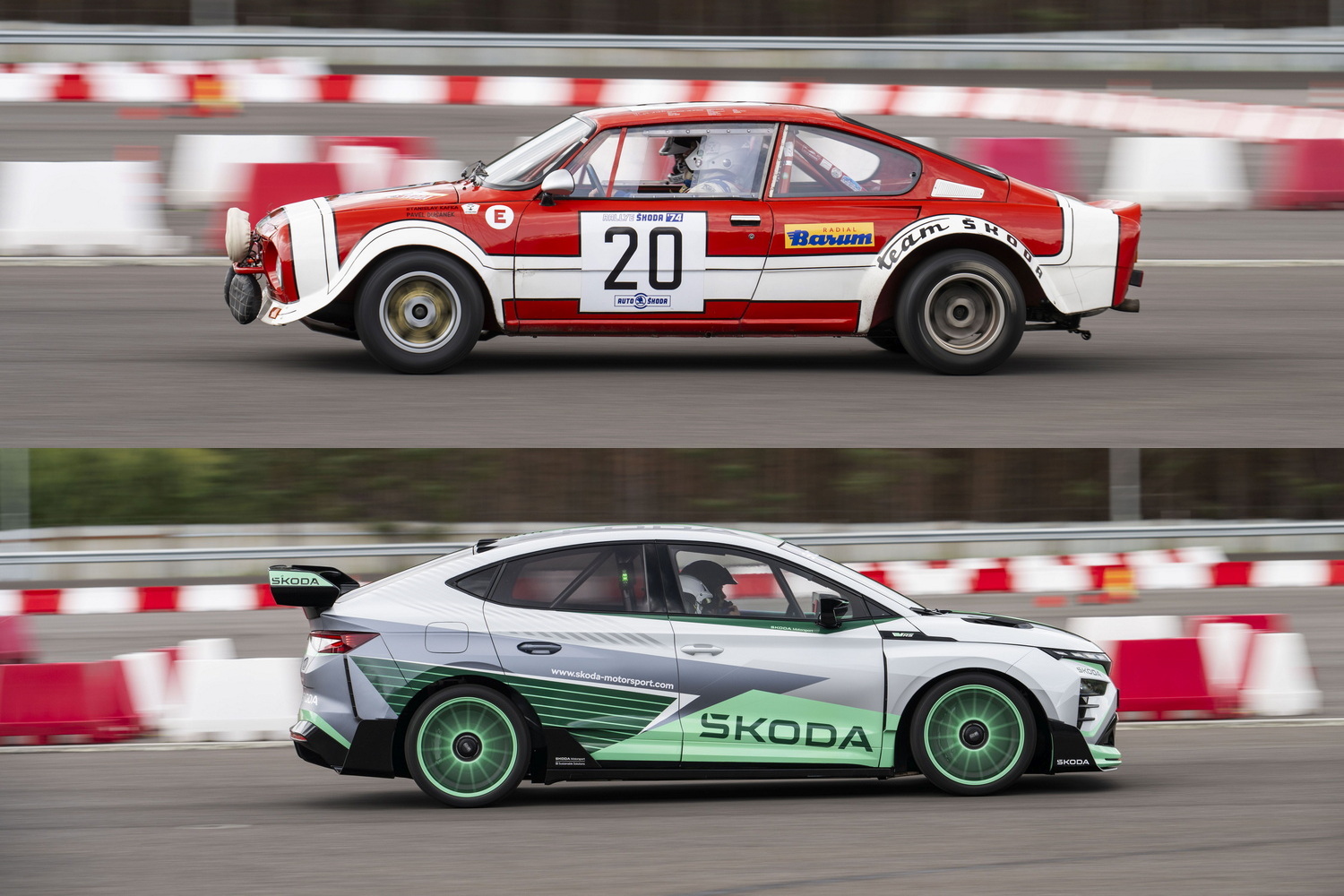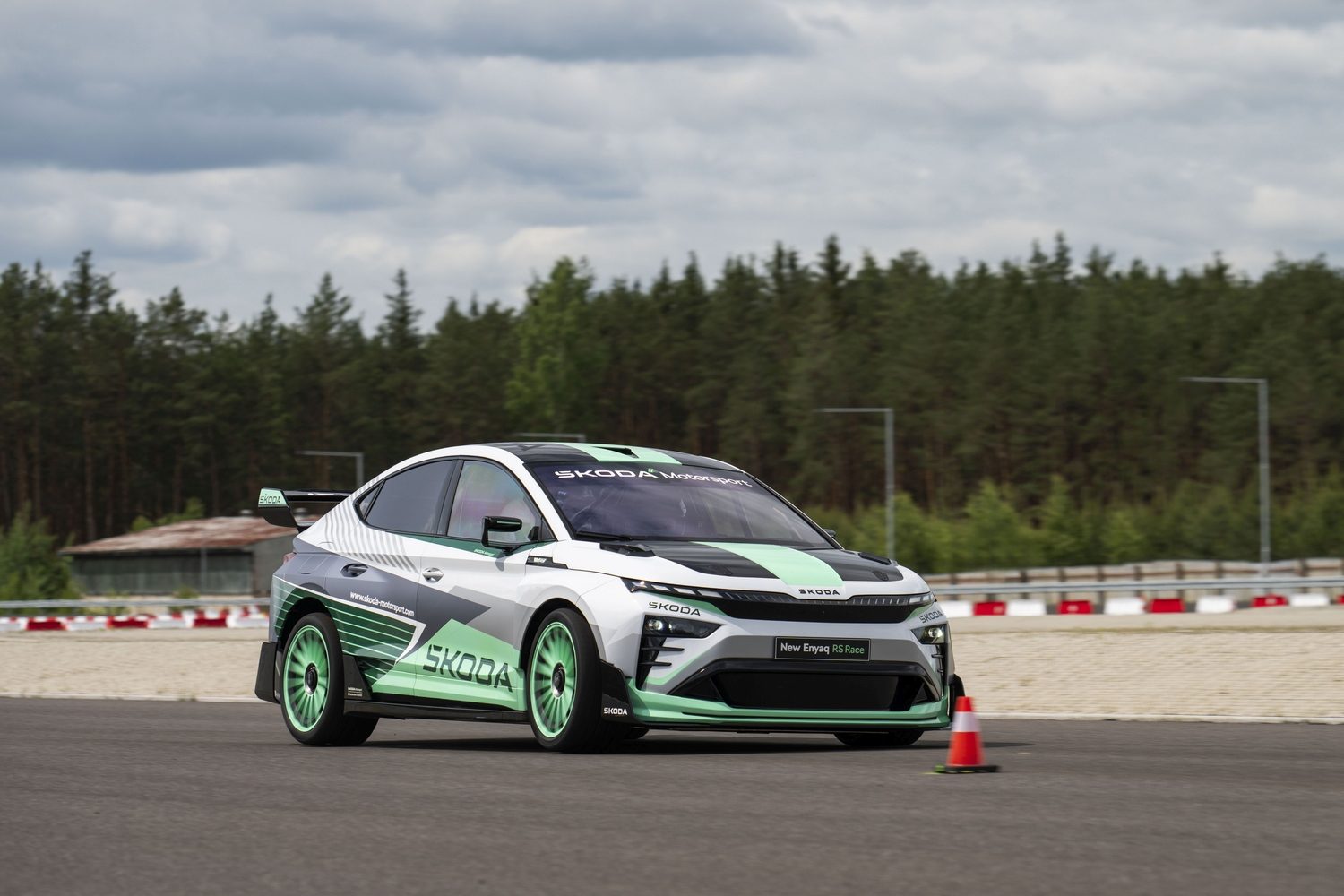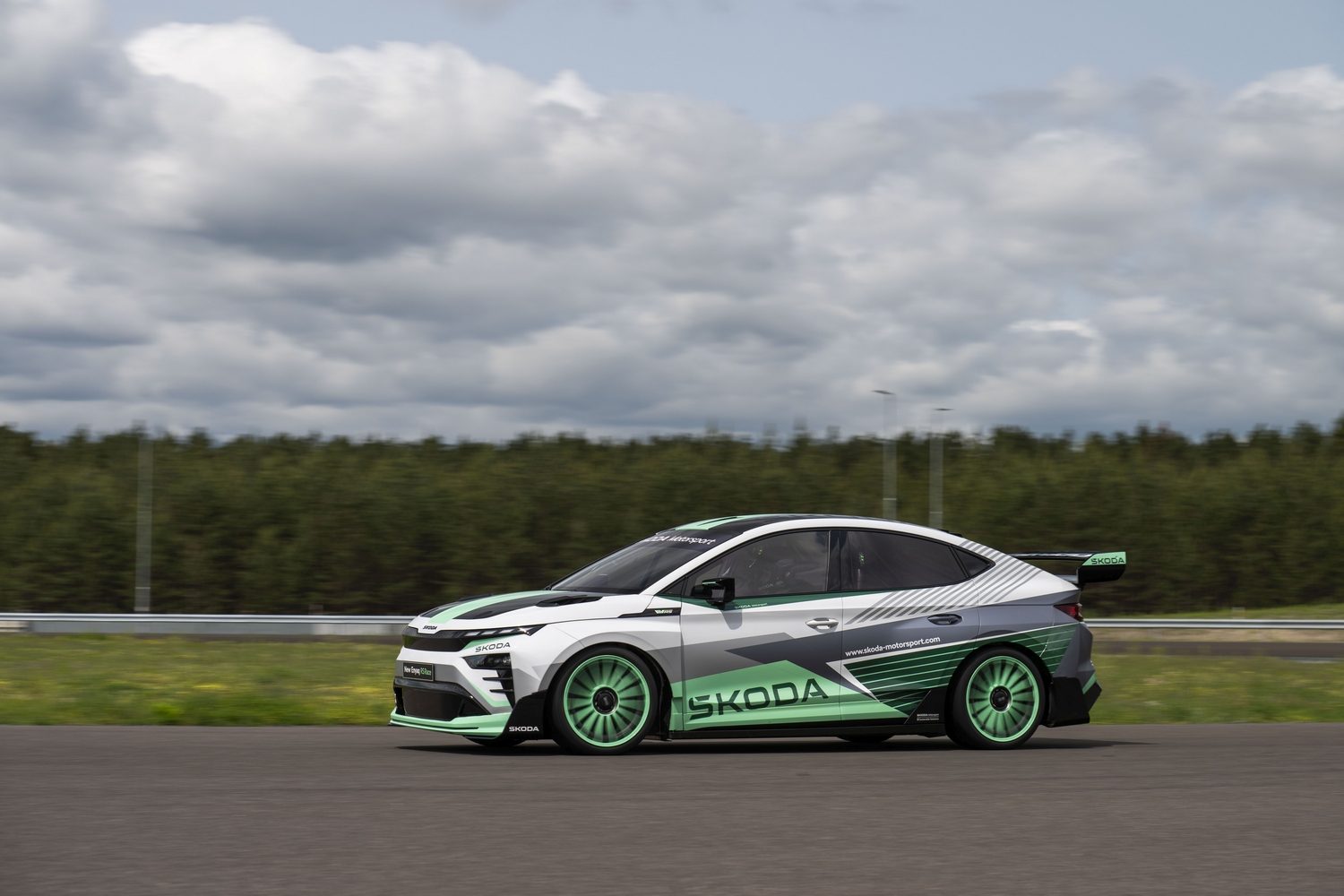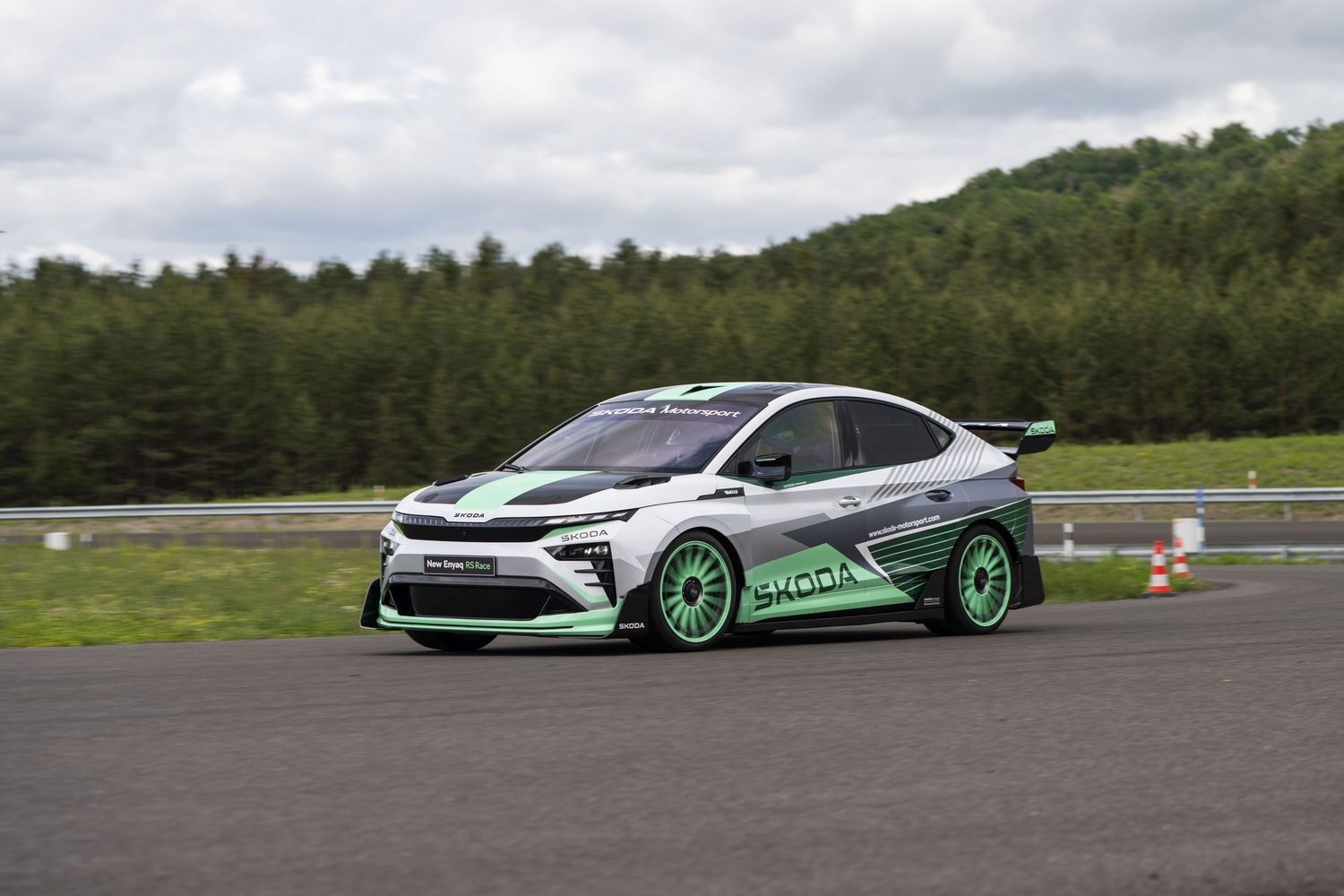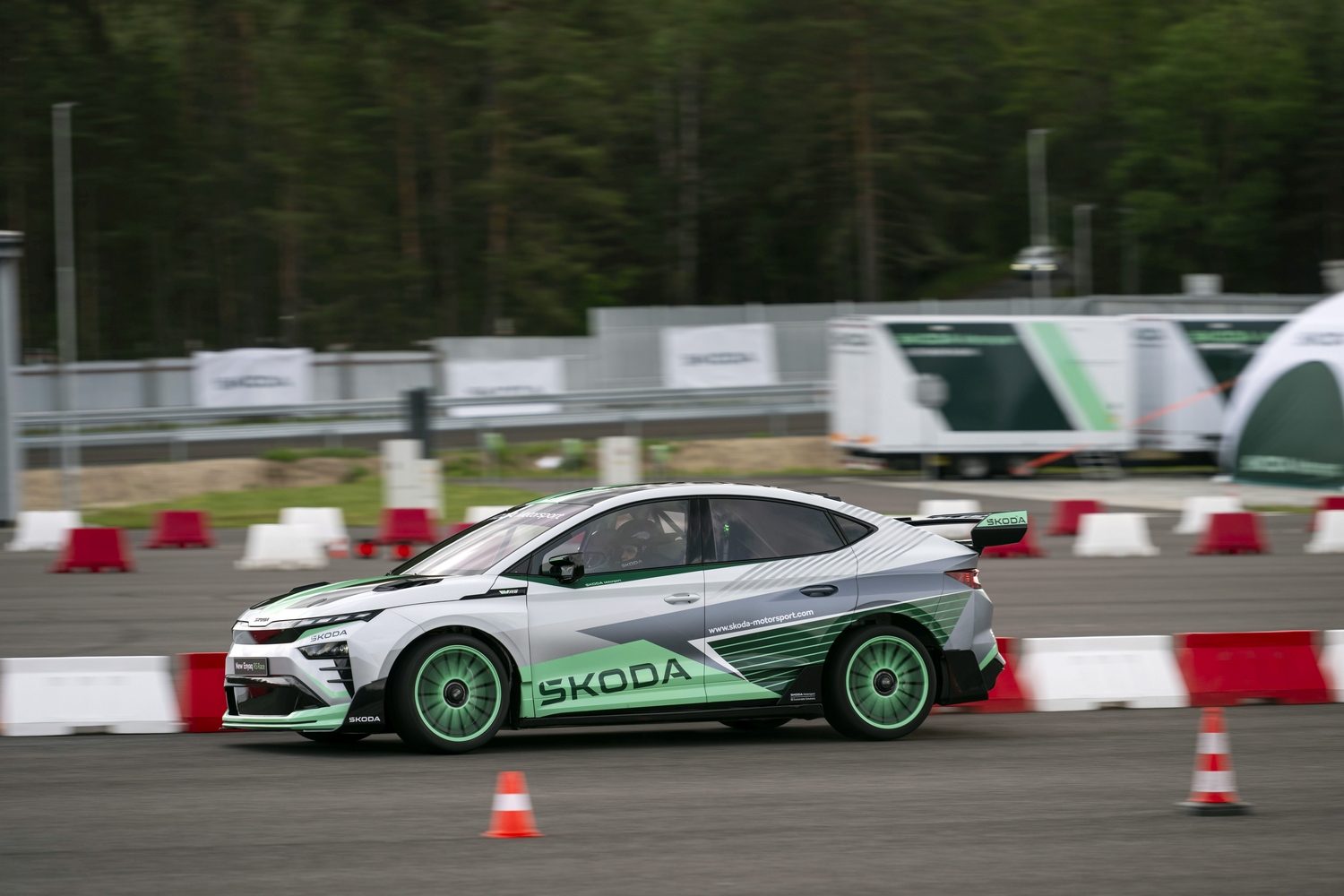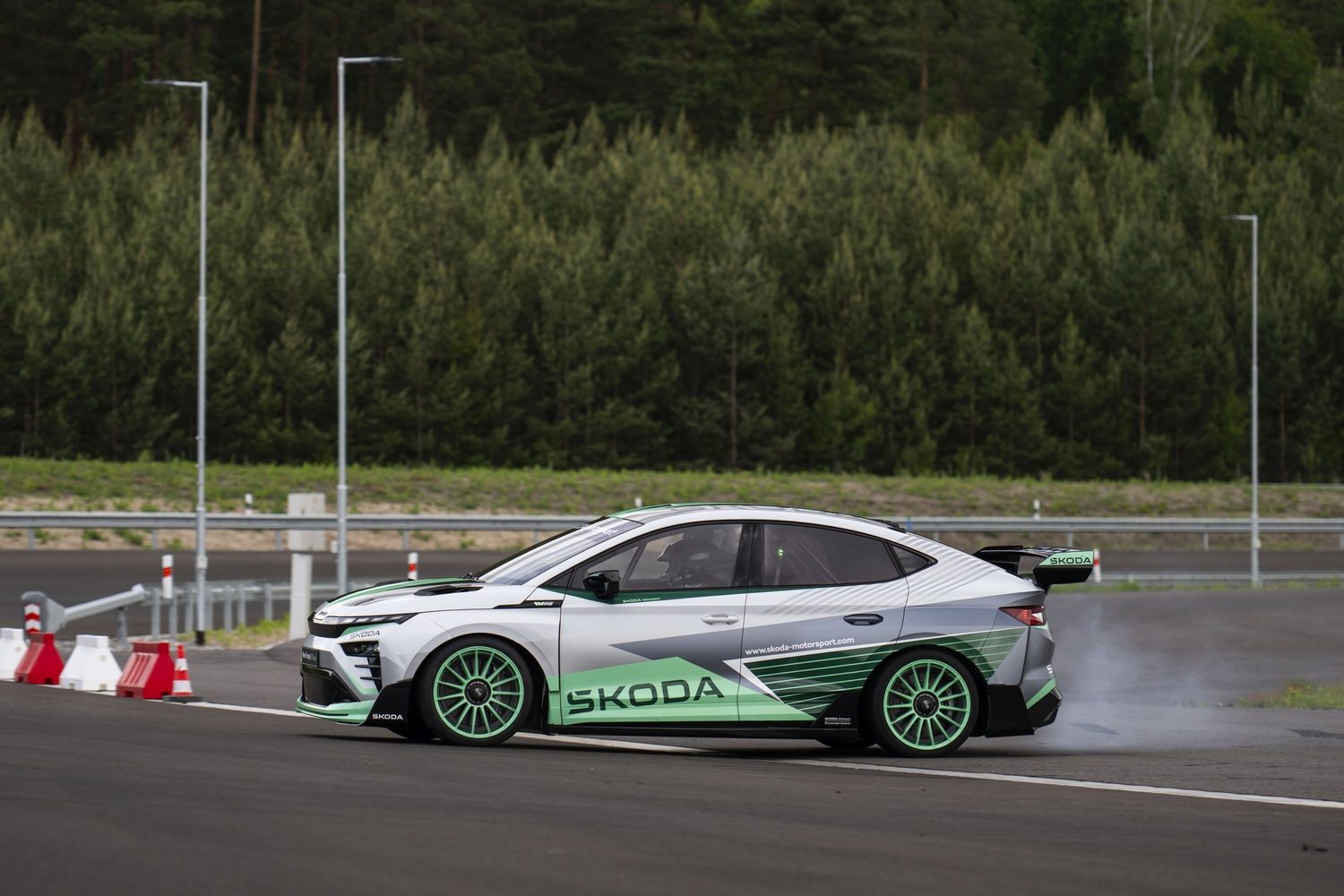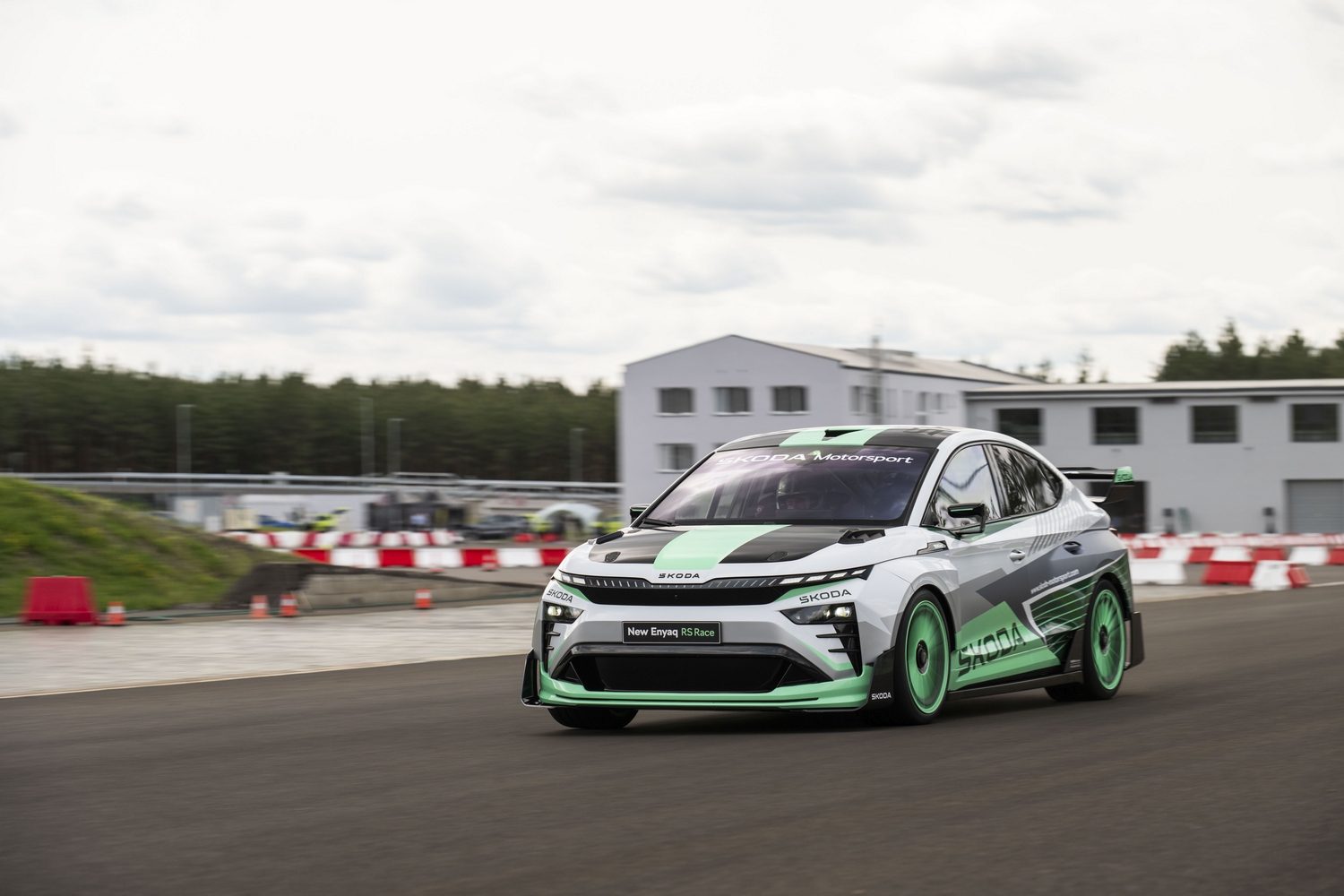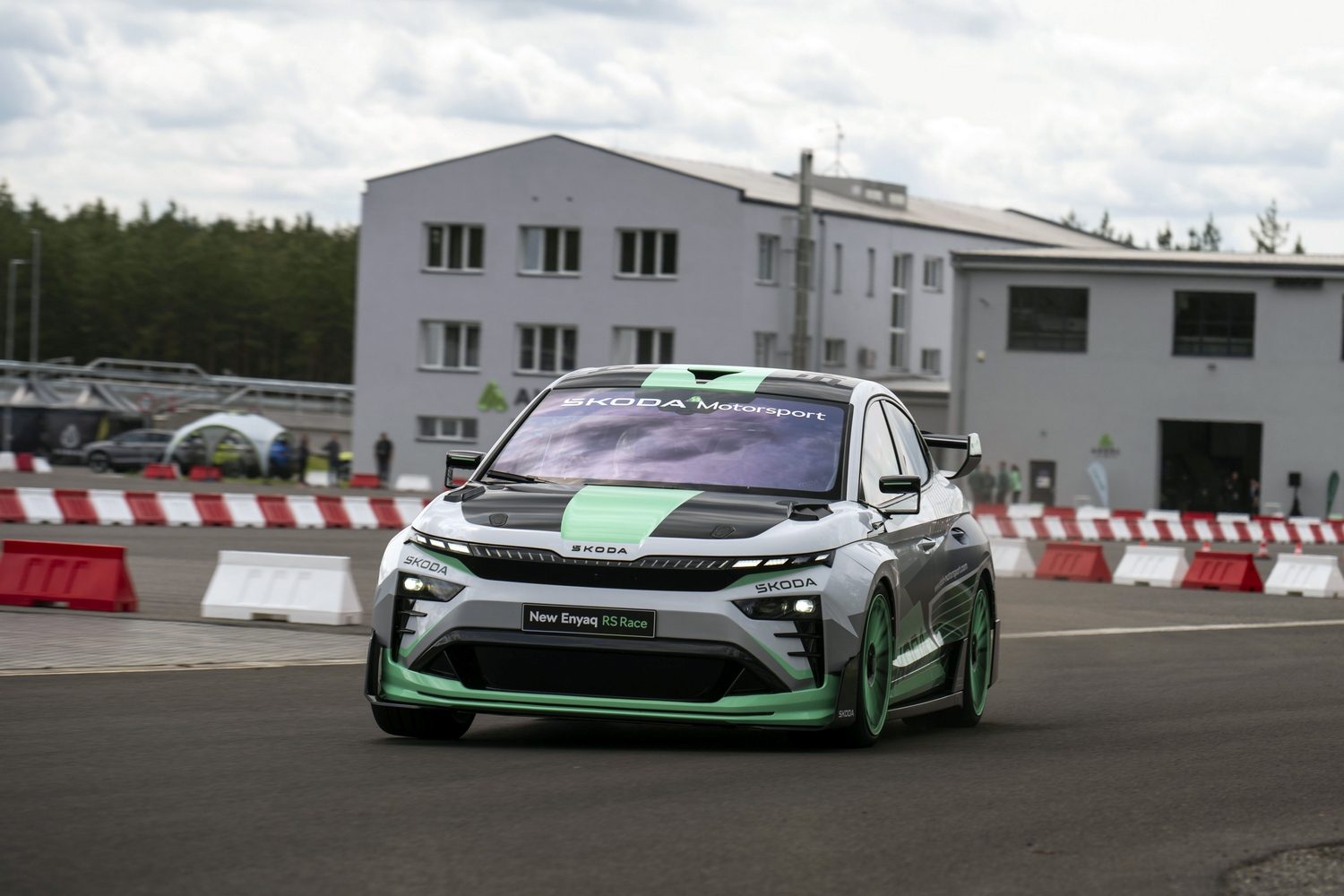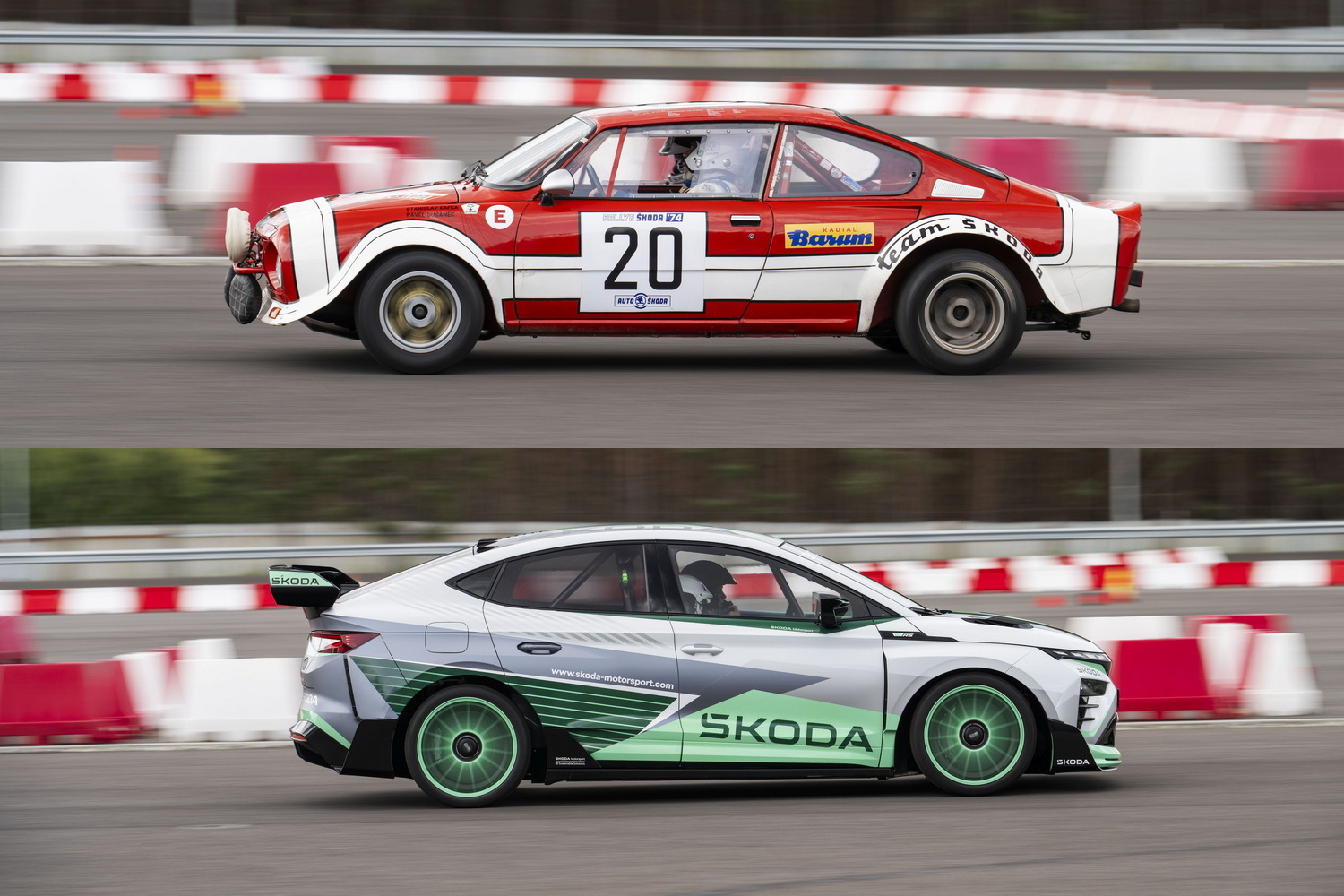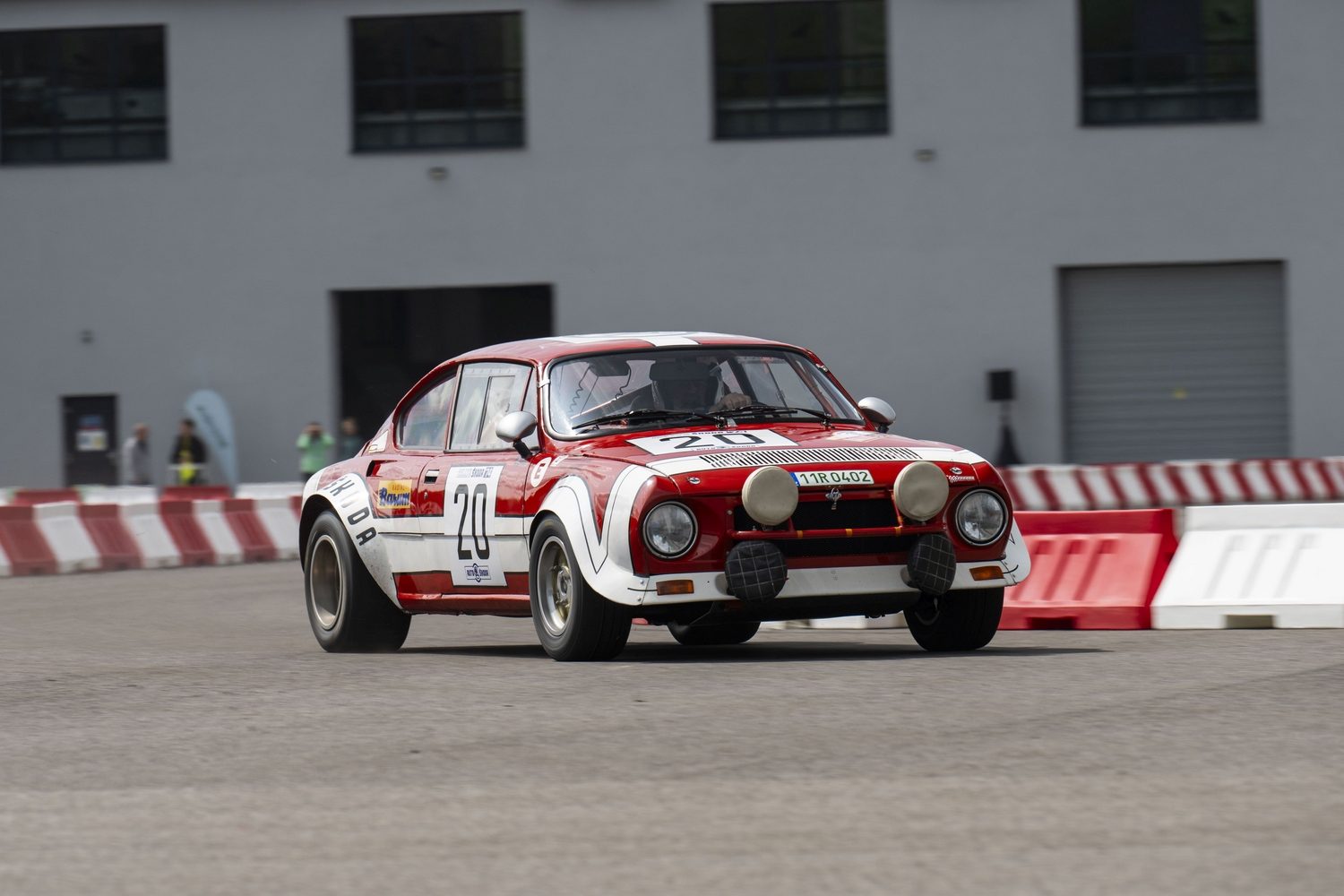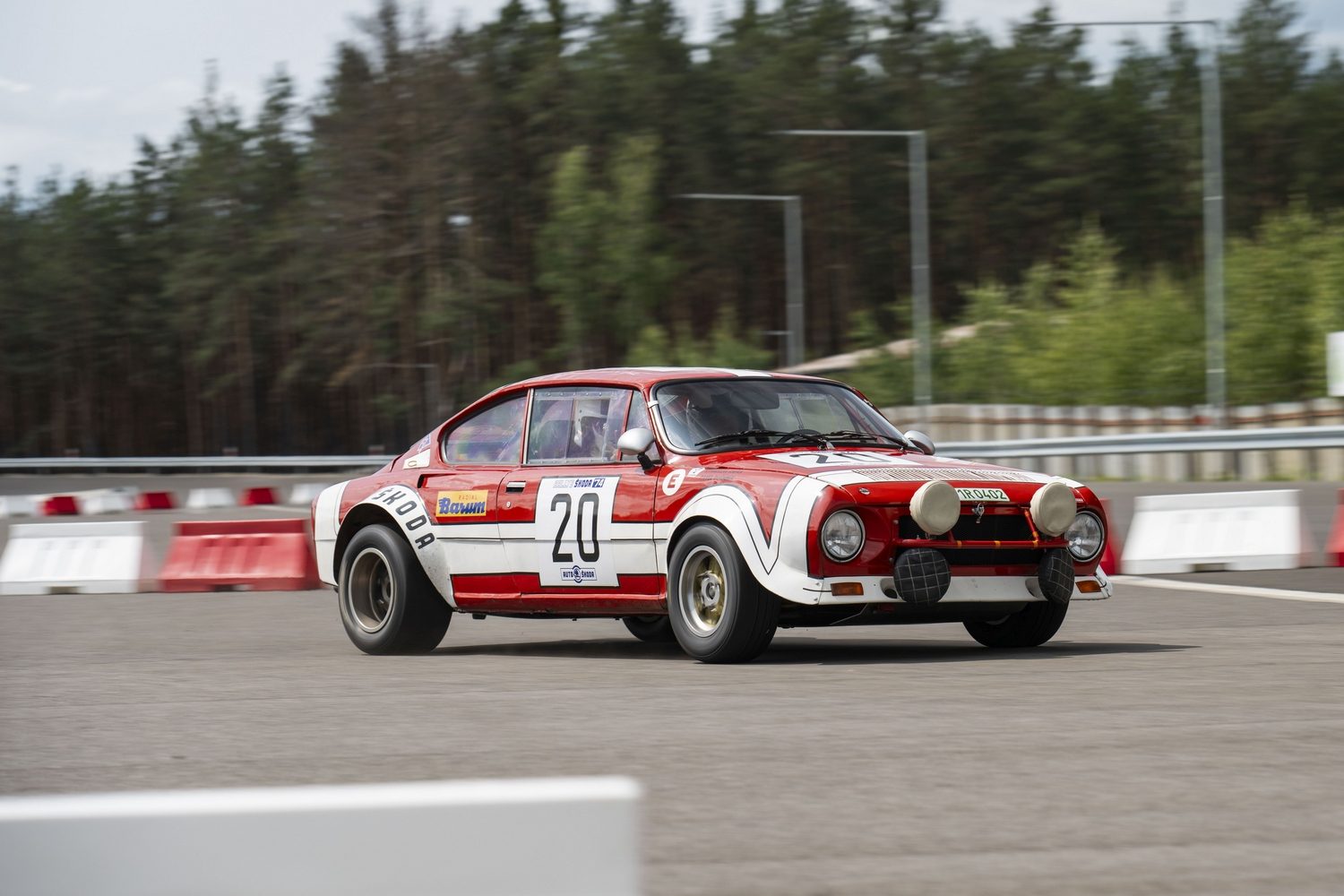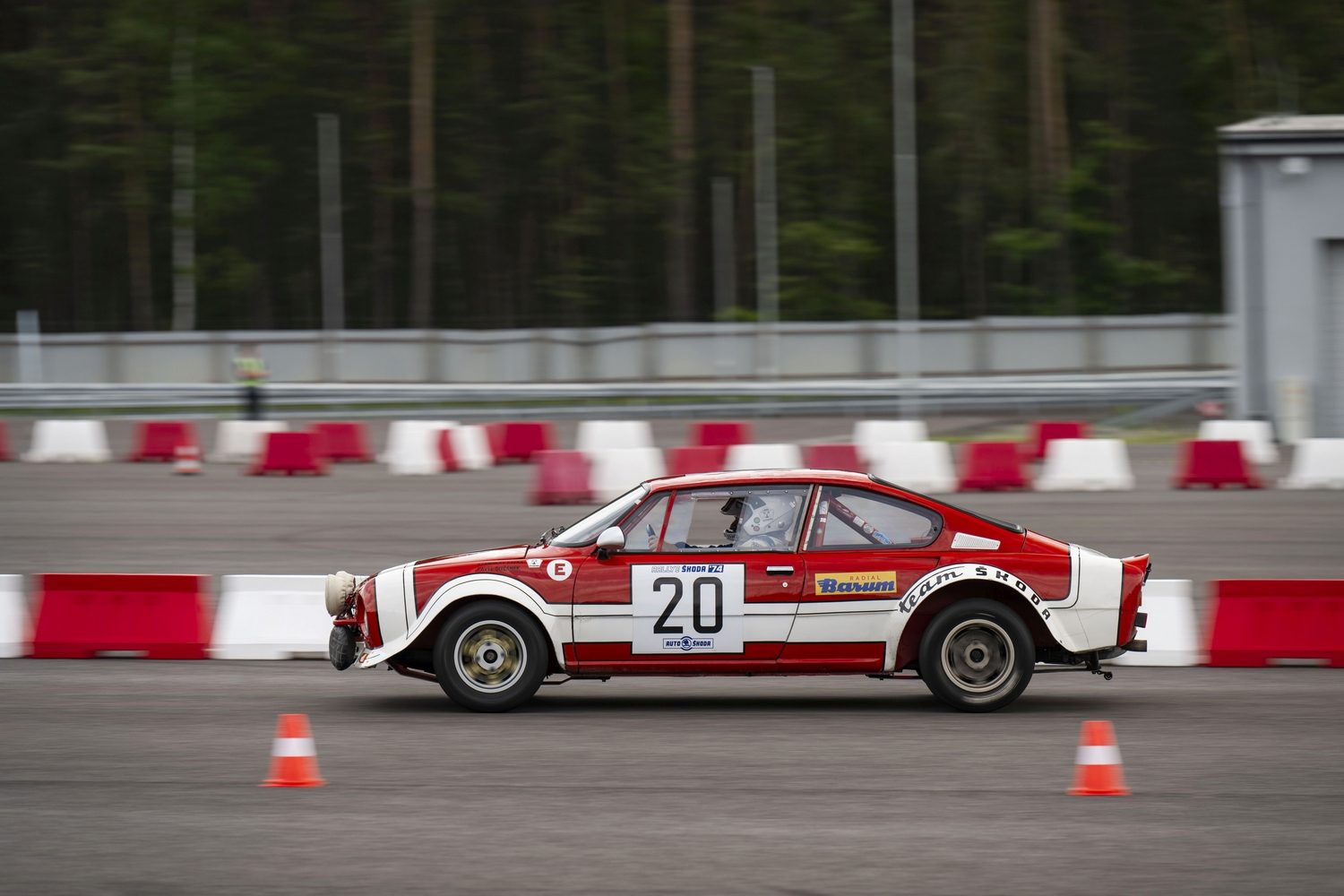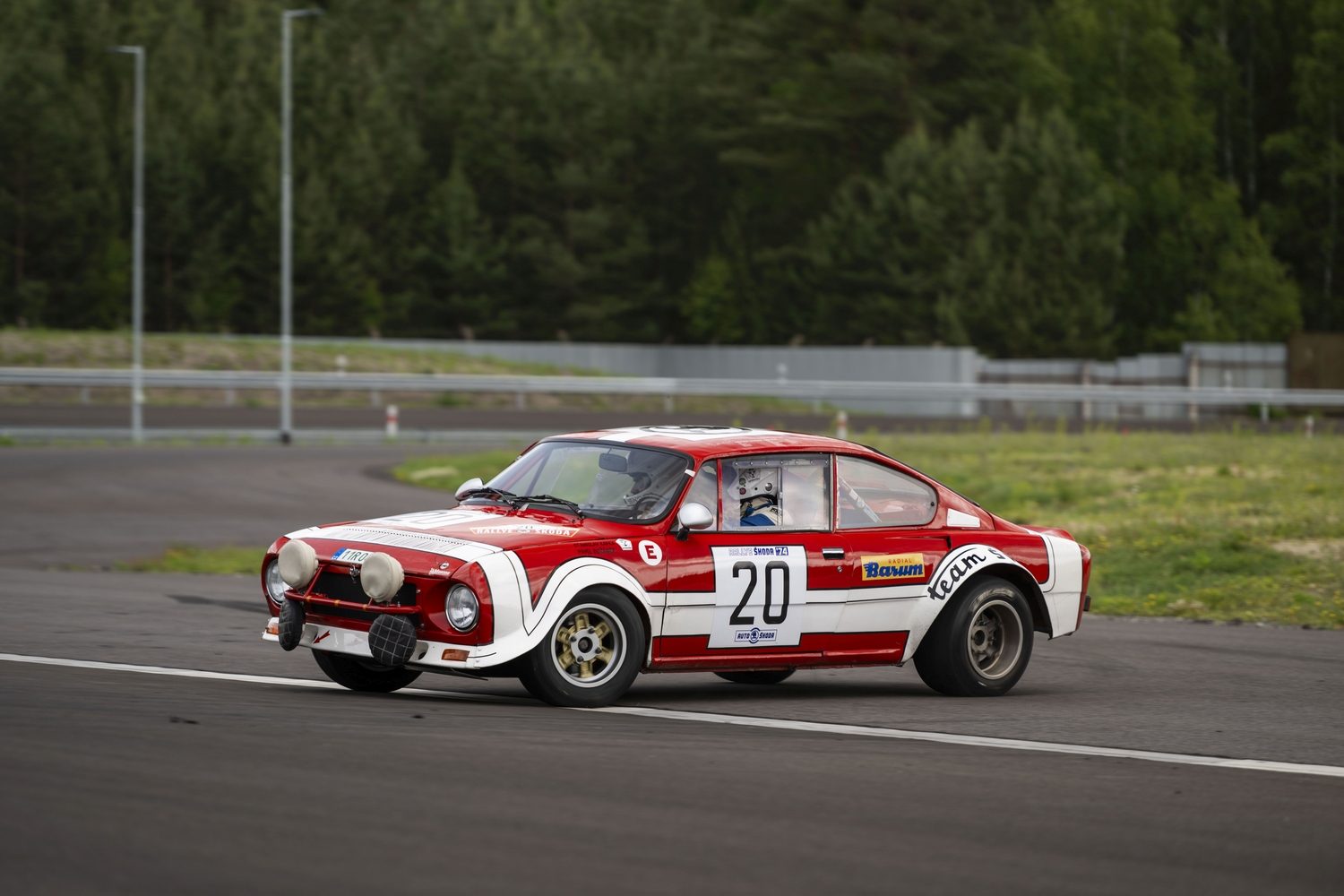The guttural roar is loud enough, at close range, to rattle your rib cage. I've stood next to more racing engines than I can count over the years, but this supposedly meek four-cylinder suddenly seems louder and ruder, thanks to the fact that it's interrupting the near-silent whoosh and swish of a paddock full of electric cars. Crash helmet pulled firmly in place, I'm invited to sashay down into the low-slung bucket seat and strap into the harness...
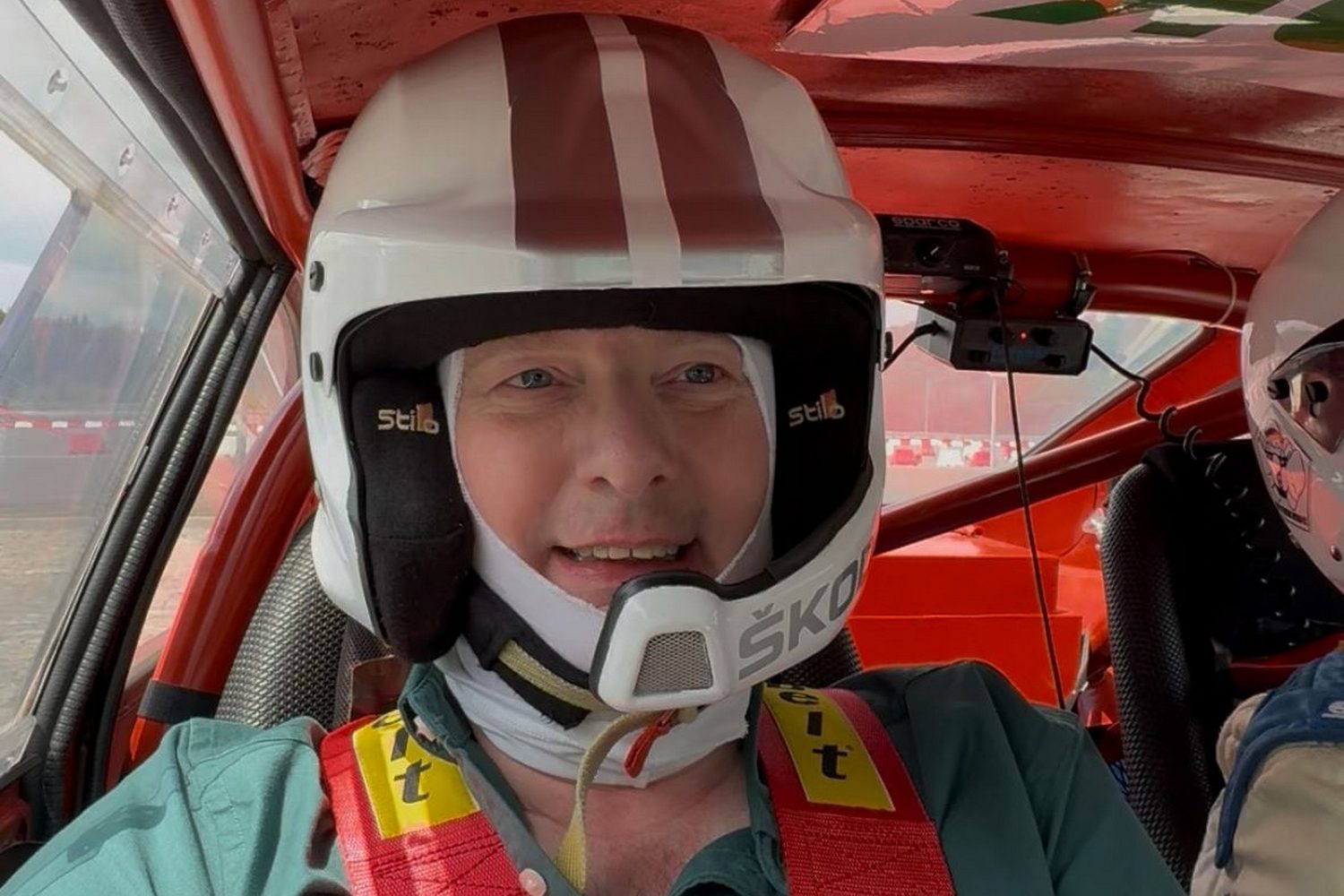
Skoda's RS models, celebrating half a century now, kind of came out of nowhere. Think back to the mid-1970s, when rallying and Touring Car racers come to mind, you might think of BMW, Ford, Alpine, Porsche and maybe even Opel.
You certainly don't think of a teeny-tiny rear-engined coupe with a stubby nose and a Communist Party membership card. But then Skoda has never really been one to follow the herd. Long before the Volkswagen takeover, then-state-owned Skoda decided that it was going to show the decadent capitalists just how things are done in downtown Prague.
Thus were born the RS versions of the 110, the 130 and the 200. The most legendary of them all, the 130 RS, is 50 years old this year, and it's the one that - only a month after its competition debut - was racking up class podiums in the under-2,000cc category of the European Touring Car Championship (ETCC).
Like, way under 2,000cc as it happens. The 130 RS might be, like a Porsche 911, rear-engined but it has a mere 1.3-litre capacity and just the four cylinders slung out behind the rear wheels. Mind you, it's no meek little engine, this. Early versions produced only 112hp, but the 130 RS was soon pumping out 142hp, and Skoda's competition department even fitted it with a five-speed gearbox until the FIA said “non”, and it had to revert to four speeds. See, Comrades? The capitalists fear our technical prowess!
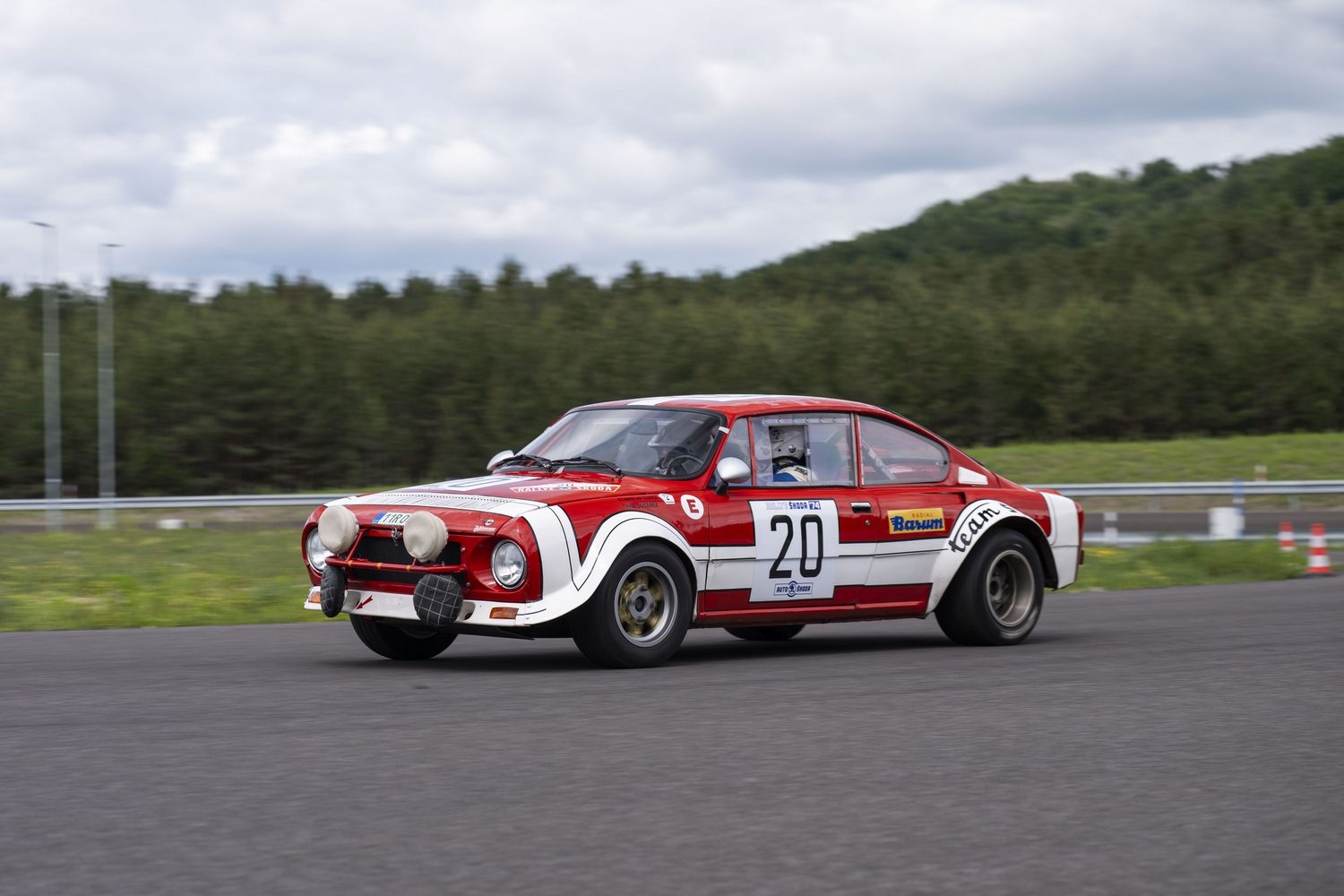
Small it may have been, but the 130 RS had lightness on its side, and an exceptionally good handling balance with - again, like the 911 - a combination of traction and the inertia of a rear-mounted engine to swing the tail out when needed.
Not only was there success in the ETCC, including a class championship in 1980, but the rallying version of the 130 RS took a class win on the 1977 Monte Carlo rally, and that's the reason that Skoda still offers a Monte Carlo trim level on some models.
My turn to experience it
Strapped in, with the ignition pulses of that four-cylinder engine gently rumbling against my spine, my driver for the day - experienced Skoda Classic driver Stanislavsky Kafka - slots the impossibly spindly little gear lever into first and we're off.
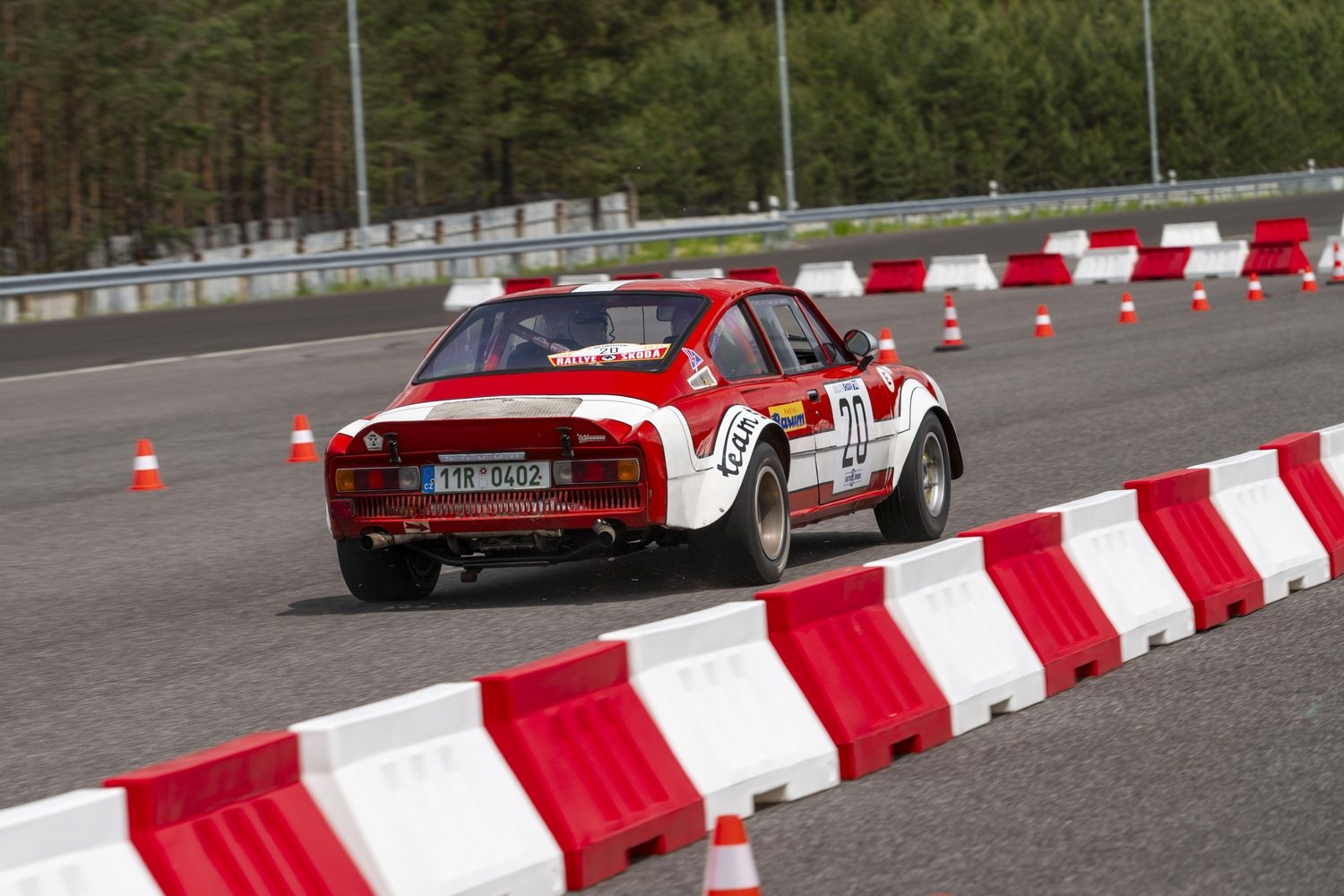
The short loop we'll be taking around the Aurel Polygon test track isn't too taxing for this aged car, but there's enough space, and enough tight turns, to show off the agility and the grip generated by those hilariously small wheels sitting under their pumped-up arches.
Aurel is about an hour from Prague, and it's surrounded entirely by forest, so unlike many test tracks, there are no noise restrictions here, which is just as well as the little 130 RS is LOUD.
It's hardly the fastest thing around, and Stanislav is taking things gently on the mechanical bits, but through the tight corners the way the tail weight sticks the rear wheels into the tarmac, the whole car pivoting around its rear contact patches almost like a forklift with rear-steer, shows you a hint of how this little Skoda became such a giant killer.
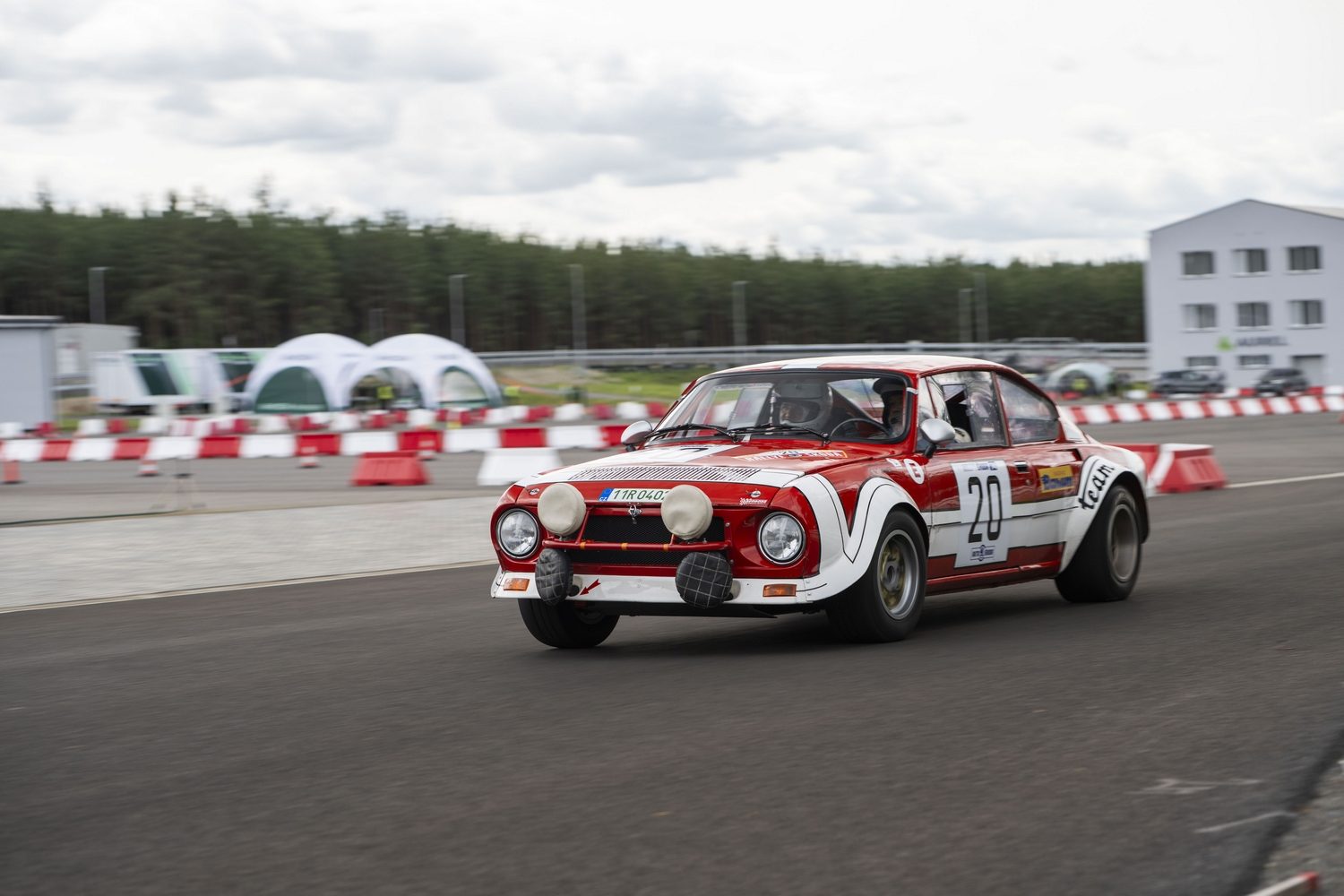
An electric RS racer
Back in the pits, I decant myself from one racing Skoda to another, but this is a rather more serious piece of kit...
Skoda wants to show off just how fast and agile an electric car can be, not least because it already has an RS version of the electric Enyaq on sale and has just launched an electric Elroq RS too. In fact, that's why we travelled to Czechia in the first place - to drive the Elroq RS.
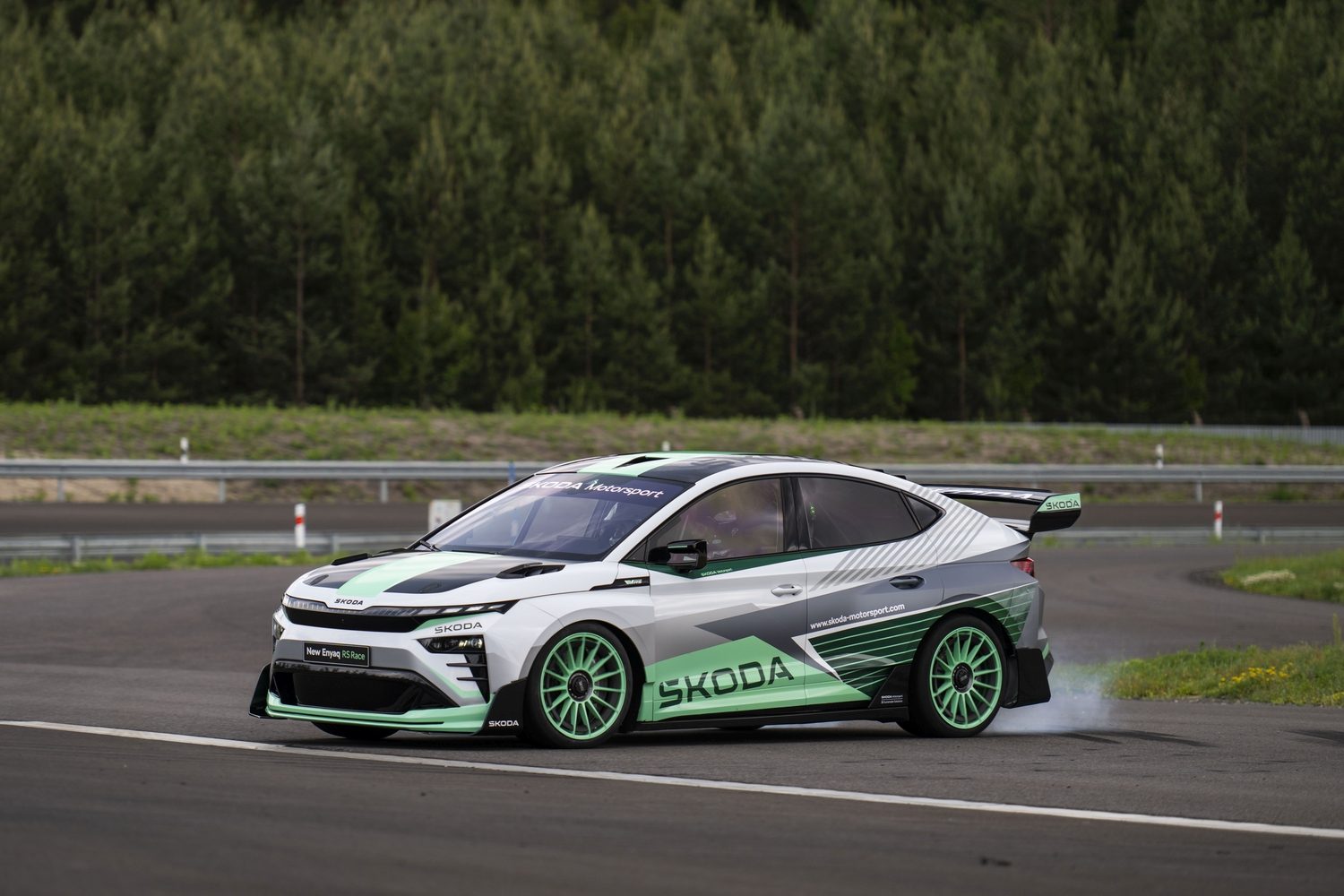
However, we're also here to snatch a quick passenger ride in the Enyaq RS Race. This is, for now, a one-off concept car designed to show just what can be done with an EV if you really, really try.
The Enyaq RS Race looks spectacularly mean - it's 70mm lower on its custom-built springs than a standard Enyaq RS Coupe, and 72mm wider at the front, with boxy arches stretched across gorgeous centre-lock OZ racing wheels, painted a vivid Skoda RS green.
It's even wider at the back, 116mm up on the road-going car, and there's the combo of a colossal rear wing and a massive tarmac-scraping diffuser under the back bumper.
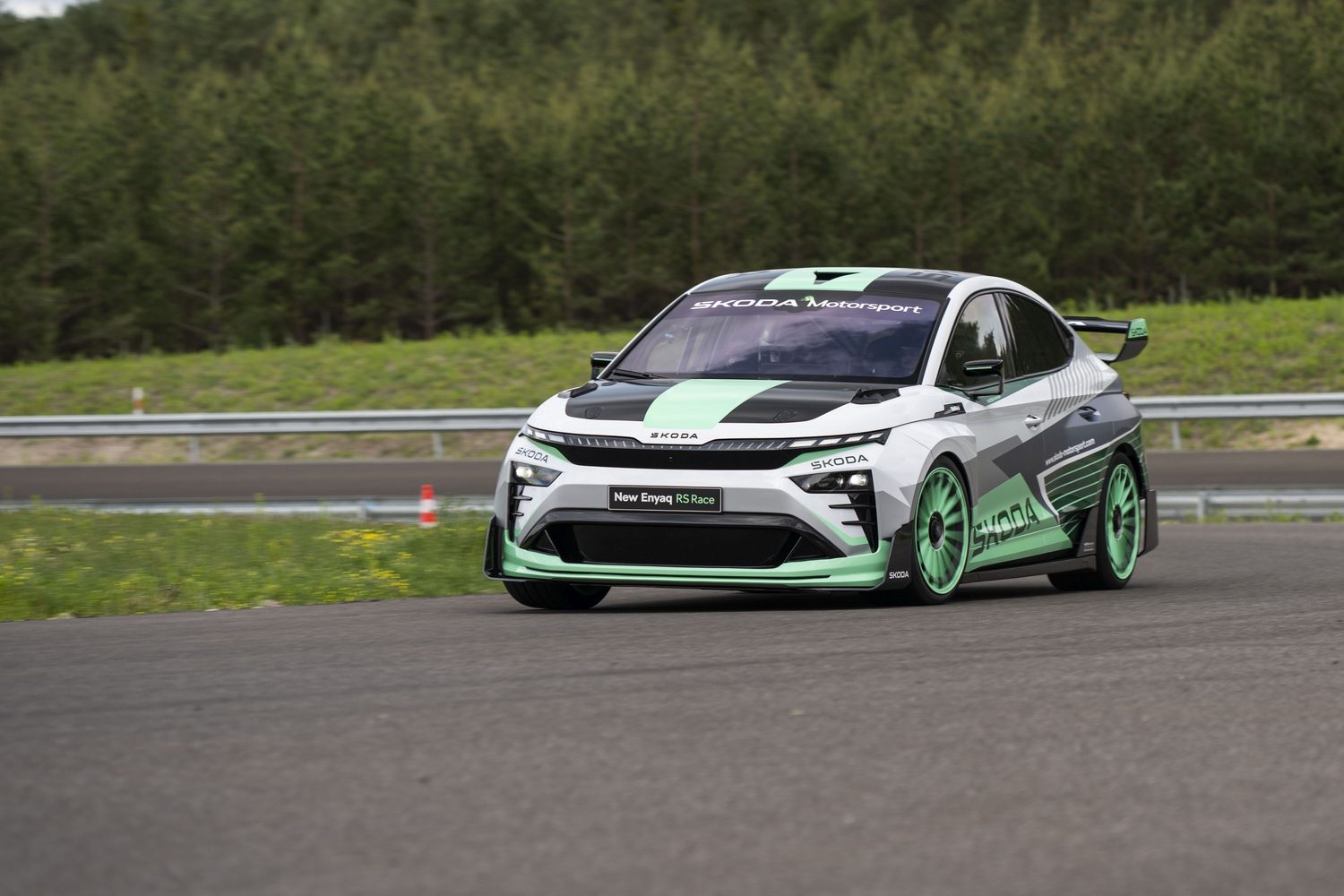
Under all the racing stuff, there are the bones of a standard road-going Enyaq RS, but Skoda has been taking some serious chunks out that car's weight. The Enyaq RS Race uses lots of 'Biocomp' - a carbon-fibre-style lightweight composite material that uses flax fibres, which can absorb carbon from the air as they grow. There's so much of the stuff that the weight of the Enyaq RS Race is some 316kg lighter than the road car.
It's harder to climb aboard than the 130 RS because there's a far bigger, more substantial roll cage, and unlike the 130's forgiving bucket seats of the 1970s, the full-on racing buckets of the Enyaq clamp you in place like a hug from a suede-clad Dwayne Johnson.
The four-point harness is hardly comfortable either, but it's hard not to be impressed by the stripped-back purposefulness of the cabin, and the massive 'whammy-bar' handbrake in the centre, which gives the Enyaq a taste of rally-car agility in tight turns.
Things get very serious
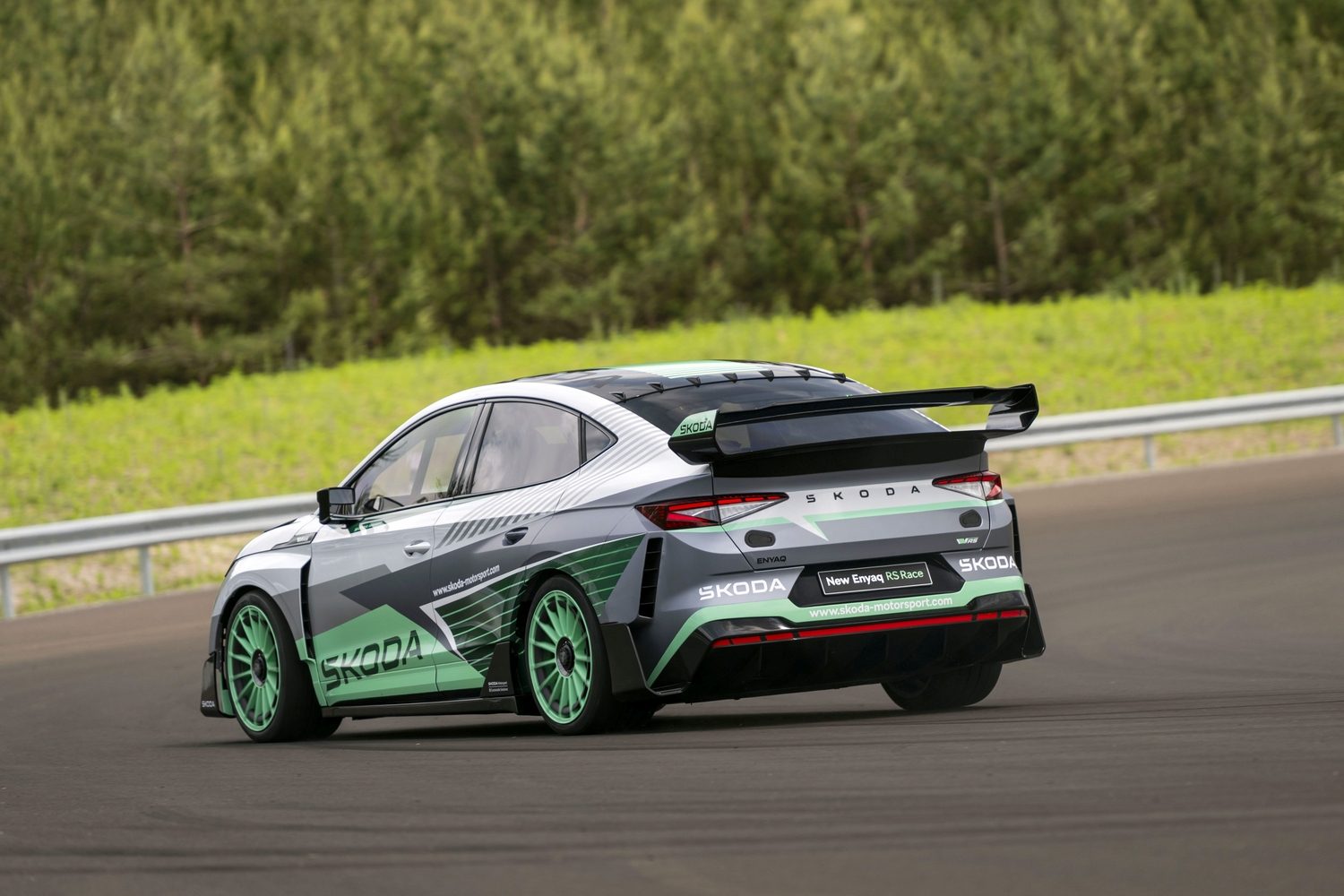
Suitably strapped in, Jan the driver pulls us gently up to the start line and hits the go pedal with the casual savagery that only a racing driver can summon.
The Enyaq RS Race leaps forward with impressive gusto (Skoda says that the 0-100km/h time has been trimmed to under five seconds) and it keeps hauling ass until your inner organs are trying to escape through yours.
But Jan isn't finished with just some straight-line speed; oh no, there's that whammy-bar to play with, which is tugged judiciously to swing the big Enyaq around the apex of a tight right-hander, limited slip differentials parcelling out the power, which brings us out onto the broader sweeps of Aurel's 1km outer oval track.
We pile through the first long right-hand corner, and steam towards a chicane that's been made up of plastic bollards about three-quarters of the way down the back straight.
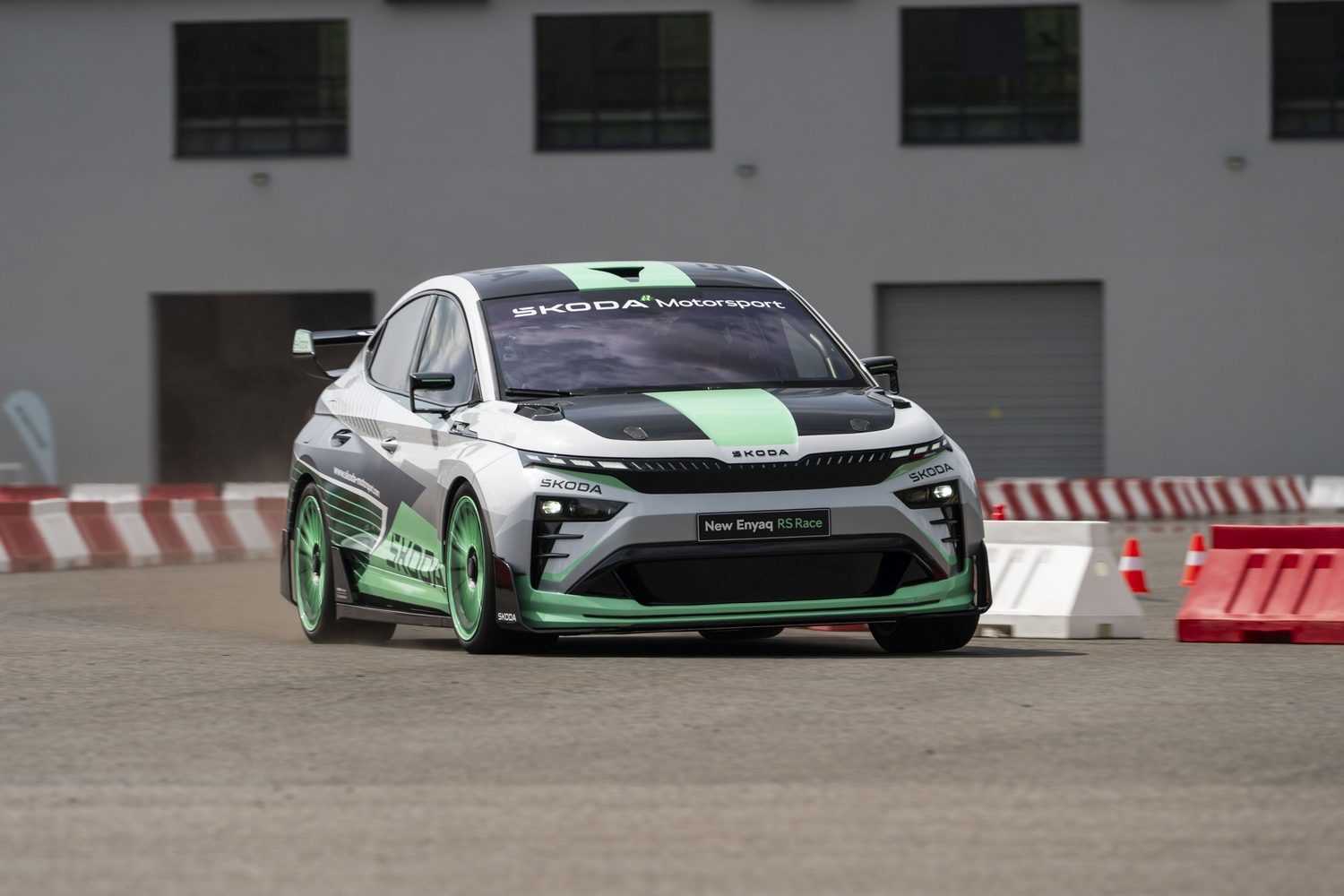
Jan is surely going to brake and shed some speed, using no less than the massive carbon-ceramic discs of the Enyaq RS Race. Isn't he?
C'mon Jan, that's a tight gap and the Enyaq is a big car and we're not losing any speed here and actually he seems to be accelerating and oh god oh shite oh sweet mother of mercy tell my wife I love her and... we're through.
With a tiniest flick of the suede steering wheel, and no apparent loss of velocity, the Enyaq RS Race flicks through the chicane, and we carry on our merry way, on a tide of electric torque and an amplified Havas sound system that plays rorty fake racing noises to amp up the experience.
The Enyaq RS Race is a hugely impressive demonstration of what you can do with an EV if you throw the road-going rulebook out of the window and really got to town on the lightweighting and the bulging bodywork.

Any future in all this fun?
It's not all go for show, though. The lightweight construction might be too pricey for a road car just now, but that may not always be the case, and the Biocomp material with its flax ingredient is way more environmentally-friendly than regular carbon fibre, so it stands more chance of being used in future production models.
The limited-slip differentials added to the electric motors also look likely to make an appearance in future electric RS cars.
Whatever about the future, the Enyaq RS Race is fantastically fast, so much so that my brain is properly scrambled by the time we roll back into the pits, and the combo of wobbly middle ear and that high-set roll cage means that my only exit strategy is to reach up and then just tumble out onto the tarmac like a falling sack of spuds. Dignified to the last.

